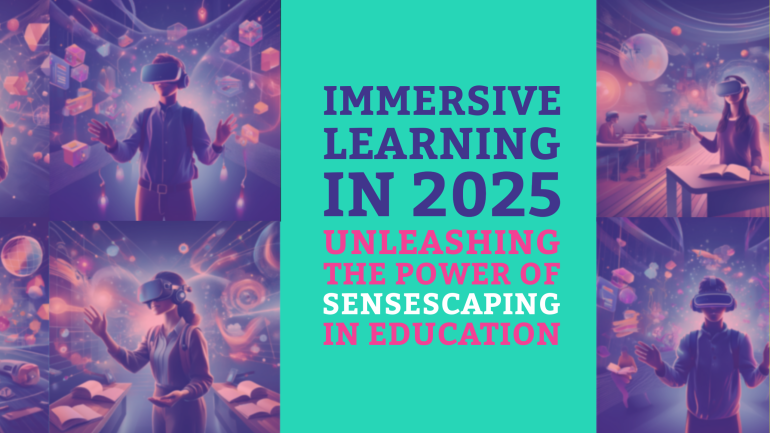Table of Contents
TL;DR: Measuring Student Satisfaction – Techniques and Insights
- Importance of Student Satisfaction: Student satisfaction is a crucial metric that directly impacts student retention, academic performance, and overall success of educational institutions.
- Various Measurement Techniques: Techniques such as surveys, focus groups, interviews, and social media monitoring are commonly used to gauge student satisfaction levels.
- Effective Communication: Regularly communicating with students, addressing their concerns, and actively seeking feedback are important factors in measuring and improving student satisfaction.
- Implementing Changes: Analyzing feedback and data collected from students can help institutions identify areas for improvement and implement changes to enhance student satisfaction levels.
- Continuous Monitoring: Student satisfaction is not a one-time measure; it requires ongoing monitoring and assessment to ensure that students’ needs and expectations are being met.
Many educational institutions strive to provide high-quality services and experiences for their students, aiming to enhance learning outcomes and retain student loyalty. Monitoring student satisfaction is a crucial aspect of this mission, as it offers valuable insights into areas of improvement and success. In this blog post, we will explore various techniques and strategies that can be utilized to effectively measure student satisfaction levels. By implementing these methods, institutions can identify strengths and weaknesses in their services, ultimately leading to enhanced student experiences and improved overall satisfaction rates.
Survey Design and Implementation
Crafting Effective Student Satisfaction Surveys
Implementation Crafting an effective student satisfaction survey is crucial for obtaining valuable feedback. Start by defining clear objectives and selecting appropriate question types. Keep the survey concise and focused on key areas of interest. Ensure the questions are clear, unbiased, and relevant to the student experience. Utilize rating scales, open-ended questions, and demographic inquiries to gather comprehensive data.
Administering Surveys for Maximum Response Rates
Maximum Maximizing survey response rates is vital to ensure a representative sample of student feedback. Consider the timing of survey distribution to align with student schedules and avoid peak academic periods. Utilize multiple communication channels such as email, social media, and in-person notifications to reach a wider audience. Provide incentives for participation and emphasize the importance of student voices in shaping campus initiatives.
With a well-crafted survey and strategic implementation, institutions can effectively measure student satisfaction and make informed decisions to enhance the overall student experience. By prioritizing survey design and maximizing response rates, universities can gain valuable insights to drive continuous improvement and student success.
Qualitative Methods
Focus Groups and Interviews in Assessing Satisfaction
Assessing student satisfaction through focus groups and interviews is a valuable qualitative method. These sessions provide in-depth insights into the perspectives and experiences of students. By gathering a small group of students or conducting one-on-one interviews, institutions can probe deeper into the factors influencing satisfaction levels. Students feel more comfortable sharing their candid opinions in these settings, which can uncover valuable feedback.
Analyzing Open-Ended Responses
Methods for analyzing open-ended responses play a crucial role in understanding student satisfaction on a deeper level. By allowing students to provide unstructured feedback, institutions can uncover insights that quantitative data may not reveal. Utilizing thematic analysis techniques, researchers can identify recurring patterns and themes in responses, providing a more nuanced understanding of student sentiments.
OpenEnded: It is important to pay attention to both positive and negative feedback in open-ended responses. While positive feedback can highlight areas of strength that institutions can leverage, negative feedback can pinpoint areas for improvement. By analyzing these responses systematically, institutions can make informed decisions to enhance the overall student experience.
Quantitative Analysis Techniques
Descriptive Statistics and Satisfaction Levels
Not only do descriptive statistics reveal the overall satisfaction levels of students, but they also provide a detailed analysis of the distribution and central tendency of data. This technique allows researchers to understand the average satisfaction level among students, as well as the range of responses received.
Inferential Statistics in Satisfaction Studies
One of the most powerful tools in measuring student satisfaction is the use of inferential statistics. This technique goes beyond simply describing the data to making inferences and predictions about the entire student population based on sample data. By utilizing inferential statistics, researchers can determine the significance of relationships between variables and draw meaningful conclusions about student satisfaction levels.
To ensure the accuracy and validity of inferential statistics in satisfaction studies, researchers must carefully consider factors such as sample size, confidence intervals, and statistical significance. By utilizing methods such as hypothesis testing and regression analysis, researchers can draw reliable conclusions about student satisfaction levels and make informed recommendations for improvement.
Emerging Trends and Tools
Digital Feedback Platforms and Real-Time Data
For educational institutions seeking to enhance their student satisfaction levels, digital feedback platforms are playing a crucial role. These platforms allow students to provide their feedback in real-time, enabling institutions to garner a deep understanding of student sentiment and promptly address concerns. With features like surveys, polls, and sentiment analysis, digital feedback platforms provide a wealth of data for institutions to improve the overall student experience.
The Role of Artificial Intelligence in Measuring Student Satisfaction
An increasingly prevalent trend in measuring student satisfaction is the integration of artificial intelligence (AI) tools. AI technologies enable institutions to analyze vast amounts of data efficiently and derive actionable insights to enhance student experience. AI algorithms can identify patterns and trends in student feedback, predict student needs, and personalize support services. By utilizing AI, institutions can proactively address issues and create a more responsive and student-centric environment.
Artificial Intelligence tools are revolutionizing the way student satisfaction is measured. With AI’s ability to process and analyze large volumes of data, institutions can gain deeper insights into student preferences and behaviors, detect issues that might go unnoticed, and implement targeted interventions to improve overall satisfaction levels. By leveraging AI technologies, institutions can stay ahead of student needs and continuously enhance the quality of their educational offerings.
Challenges in Satisfaction Measurement
Addressing Biases and Ensuring Privacy
With the rise of online surveys and digital feedback systems, addressing biases in student satisfaction measurement has become a critical concern. It’s crucial to design surveys that are unbiased and inclusive to ensure that all student voices are heard. Ensuring privacy and confidentiality in the data collection process is equally important to encourage students to provide honest feedback without the fear of repercussions.
Overcoming Response Fatigue among Students
Satisfaction surveys are vital for understanding student needs and improving educational experiences, but one of the significant challenges is response fatigue. Students are bombarded with surveys from various sources, leading to decreased response rates and compromised data quality. To address this issue, educational institutions can implement strategies such as timing surveys strategically, keeping them short and engaging, and offering incentives to encourage participation.
Challenges in satisfaction measurement include biases that may skew results, while ensuring privacy is crucial for data accuracy. Response fatigue among students poses a major threat to the reliability of feedback, emphasizing the importance of engaging survey design and timing.
Utilizing Data for Improvement
Interpreting Satisfaction Data for Institutional Change
Many educational institutions collect student satisfaction data through surveys, focus groups, and other tools. To leverage this data effectively for institutional change, it is imperative to analyze the results carefully and identify patterns or trends that indicate areas for improvement. Using statistical methods and data visualization techniques can help in translating raw data into actionable insights that drive positive change.
Strategies for Implementing Feedback and Monitoring Progress
Many institutions struggle with implementing feedback effectively and monitoring progress over time. Progress, creating a structured feedback loop and establishing key performance indicators can significantly enhance the effectiveness of feedback mechanisms. For instance, setting clear goals for improvement based on feedback, regularly reviewing progress towards these goals, and making adjustments as needed are crucial steps in the process of continuous improvement.
To wrap up
With these considerations in mind, measuring student satisfaction through various techniques and insights is crucial for institutions to improve the overall student experience. By implementing surveys, focus groups, and feedback mechanisms, educators can gain valuable insights into student preferences and needs, ultimately leading to better academic outcomes and higher retention rates. It is imperative for institutions to continuously evaluate student satisfaction and make adjustments based on the feedback received in order to create a positive and supportive learning environment for all students.
FAQ
Q: Why is measuring student satisfaction important?
A: Measuring student satisfaction is important because it provides valuable insights into the quality of educational programs and services. It helps institutions identify areas for improvement and enhance the overall student experience.
Q: What are the common techniques used to measure student satisfaction?
A: Common techniques used to measure student satisfaction include surveys, focus groups, interviews, and social media monitoring. These methods help gather feedback from students and assess their satisfaction levels effectively.
Q: How can institutions use student satisfaction data to make improvements?
A: Institutions can use student satisfaction data to identify trends, pinpoint areas of dissatisfaction, and make data-driven decisions to enhance services, programs, and facilities. This feedback loop is imperative for continuous improvement.
Q: What are the benefits of measuring student satisfaction?
A: Measuring student satisfaction can lead to increased student retention, improved academic performance, enhanced reputation of the institution, and ultimately higher levels of student success and satisfaction.
Q: How can institutions ensure the accuracy and reliability of student satisfaction data?
A: To ensure the accuracy and reliability of student satisfaction data, institutions should use standardized survey instruments, collect data consistently over time, ensure anonymity for participants, and analyze data comprehensively to draw meaningful insights.





